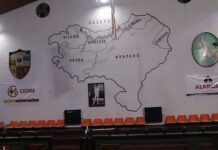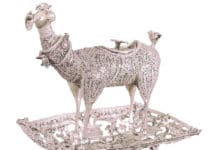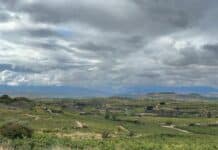Today we wanted to bring you an article in the Basque newspaper Deia. Now we know we have the rule to not reference any media outlets from the Basque Country, France, or Spain, we are breaking that rule today because the news is just that extraordinary.
The article we’re bringing you, whose title we’ve “copied”, is penned by historian Oscar Álvarez-Gila. This doctor in history and professor of History of the Americas at the University of the Basque Country has been quoted many times on our site thanks to his amazing work studying the presence of the Basque Passionists in Peru. He’s a part of the Basque Country University consolidated research team, Basque Country, Europe and the Americas: Atlantic Links and Relations.
Álvarez-Gila tells us about the leading role the Basque diaspora played, especially in Argentina, in the process of consolidating Basque nationalist symbols in the first years of the 20th century.
The loss of Basque liberties that had been caused by the abolition of the charters at gunpoint had been a tough blow not only for the Basques south of the Pyrenees but also for those in the Diaspora, who took on a belligerent role to face up to this new situation. It is no coincidence or exception that the Laurak Bat in Buenos Aires, a leading Basque center, was created in 1877 by a group of Basque immigrants who had been touched by the impact of the abolition of the charters.
In 1907, a few years after Sabino Arana had taken the first steps in the process of Basque Nation-Building, there were representatives of the Basque Center at the homage ceremony held in his honor at his grave in Sukarrieta, coinciding with the date that commemorated the first time the Ikurriña was hoisted.
There was quite a process from when the Arana brothers designed the flags that would represent the Basque territories and their confederation to when it would become the flag of the Basques as we know it today. And along that path, the Basques of the diaspora played a pivotal role.
And that’s what we get to discover in Álvarez-Gila’s article: how the Basque center Laurak Bat in Buenos Aires made the decision in April 1921 to assume that the Ikurriña represented all Basques, and the importance that decision had.
It’s yet another example of the leading, and fundamental, role played by the Basque diaspora in the history of our Country.
We’re also including a video Óscar Álvarez-Gila has prepared on this topic for the Sabino Arana Foundation.
Deia – 13/6/2020 – Euskadi
Buenos Aires, 1921: cuando la ikurriña se convirtió en la bandera vasca


La ikurriña es, hoy en día, el símbolo vasco más universalmente reconocido. Aunque todavía haya momentos en los que reaparecen viejos prejuicios –como, por ejemplo, ocurriera en el certamen de Eurovisión en 2016–, la ikurriña ha adquirido en nuestra sociedad un altísimo grado de consenso, siendo aceptada por una inmensa mayoría de la ciudadanía como la plasmación visual de la identidad vasca. La bandera bicrucífera y sus tres colores –rojo, verde y blanco– están ya integrados en nuestro universo mental como genuinos sinónimos de la vasquidad. Pero, como ocurre con todas las propuesta simbólicas que en el mundo han sido, y muy especialmente las que quieren representar identidades nacionales, el recorrido desde su creación hasta su total aceptación ha pasado por una evolución larga y, en ocasiones, dificultosa.
(Follow) (Automatic translation)
Last Updated on Dec 20, 2020 by About Basque Country





























